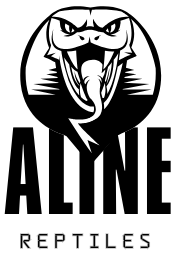If you own a bearded dragon, their health and well-being are undoubtedly a top priority. But what happens when your scaly companion develops a mysterious, crusty skin infection? One of the most devastating diseases bearded dragons can face is yellow fungus disease (YFD)—a highly contagious and often fatal fungal infection.
If left untreated, this disease can rapidly deteriorate your pet’s health. In this guide, we’ll cover everything you need to know about yellow fungus bearded dragon cases, including causes, symptoms, treatment options, and prevention strategies to help keep your reptile healthy and thriving.
What is Yellow Fungus Disease?

Yellow Fungus Disease (YFD), scientifically known as Nannizziopsis guarroi, is a severe fungal infection that affects reptiles, particularly bearded dragons. This disease primarily targets the skin, causing it to become discolored, crusty, and necrotic. Over time, the fungus spreads deeper into tissues, leading to severe health complications, organ damage, and even death.
Causes and Risk Factors
Yellow fungus in bearded dragons is caused by a highly contagious fungal pathogen. Understanding the risk factors can help you prevent infection and maintain a healthy habitat for your pet.
| Cause/Risk Factor | Explanation |
|---|---|
| Poor hygiene | Dirty enclosures allow fungus to thrive and spread. |
| Weakened immune system | Stress, poor diet, and inadequate heating weaken immunity. |
| Close contact with infected reptiles | The fungus spreads via direct or indirect contact. |
| High humidity | Excessive moisture creates an environment for fungal growth. |
| Wounds or skin injuries | Open wounds increase susceptibility to infection. |
Symptoms of Yellow Fungus in Bearded Dragons
Early detection of yellow fungus is crucial for successful treatment. Symptoms can vary in severity but generally include:
- Yellow, brown, or gray discoloration of the skin
- Crusty, rough, or fuzzy patches
- Excessive shedding with exposed raw skin underneath
- Weight loss and reduced appetite
- Lethargy and general weakness
- Sunken eyes
- Necrosis (blackened or dead tissue)
Visual Guide to Symptoms
| Symptom | Description |
| Yellow or brown patches | Discolored skin, often starting as small spots. |
| Crusty, peeling scales | Scales may flake off, revealing raw skin. |
| Weakness and lethargy | Less movement, reduced basking, and sluggish behavior. |
| Open wounds and ulcers | The infection may cause sores and wounds that fail to heal. |
| Blackened areas | Severe cases lead to necrosis, where tissue dies and turns black. |
Diagnosis
If you suspect your bearded dragon has yellow fungus, seek veterinary care immediately. A reptile veterinarian will conduct the following diagnostic tests:
- Physical Examination – Checking for visual signs of infection.
- Skin Scrapings – Collecting samples for microscopic analysis.
- Fungal Culture – Identifying the presence of Nannizziopsis guarroi.
- PCR Testing – Detecting fungal DNA in skin samples.
- Biopsy – Examining tissue samples for deeper fungal infiltration.
Treatment Options

Yellow fungus is aggressive and requires prompt medical intervention. The treatment plan typically includes oral antifungal medications, topical applications, and environmental changes.
1. Medical Treatment
| Treatment Type | Examples | Purpose |
| Oral Antifungals | Itraconazole, Voriconazole | Targets internal fungal infection. |
| Topical Treatments | Miconazole, Clotrimazole | Directly treats affected skin. |
| Medicated Baths | Betadine, Chlorhexidine | Reduces fungal spread and disinfects skin. |
2. Supportive Care
- Maintain optimal enclosure temperatures (95-105°F for basking).
- Provide a clean, dry environment with proper ventilation.
- Offer a nutritious diet to strengthen the immune system.
3. Wound Care
- Use antiseptics like diluted povidone-iodine to clean wounds.
- Apply silver sulfadiazine cream to prevent secondary infections.
Prevention Strategies
Preventing yellow fungus in bearded dragons is easier than treating it. Here are essential steps to reduce the risk of infection:
| Preventive Measure | Why It’s Important |
| Regular enclosure cleaning | Prevents fungal spores from accumulating. |
| Proper temperature and humidity | Ensures a healthy environment. |
| Quarantining new reptiles | Stops the spread of infections from new pets. |
| Wound monitoring and care | Prevents fungal infections from starting. |
| UVB exposure | Boosts immune function and overall health. |
Is Yellow Fungus Contagious?

Yes, yellow fungus is highly contagious among reptiles. Bearded dragons in close quarters can spread the infection through:
- Direct skin contact
- Shared surfaces (rocks, logs, food bowls)
- Contaminated hands or tools
To prevent transmission, always disinfect your hands and equipment after handling an infected bearded dragon.
Common Misconceptions About Yellow Fungus
1. “Yellow fungus is just dry skin”
False – While shedding is normal, fungal infections cause severe skin damage and don’t heal on their own.
2. “Bearded dragons can recover without treatment”
False – Yellow fungus is progressive and fatal if untreated. It requires medical intervention.
3. “Only sick dragons get yellow fungus”
False – Even healthy bearded dragons can contract the fungus if exposed to contaminated environments.
Conclusion
Yellow fungus bearded dragon infections are serious, but with proper care and vigilance, they can be managed or prevented altogether. Regular hygiene, a nutritious diet, and prompt veterinary care are essential for keeping your bearded dragon healthy.
If you notice any warning signs, act fast—early treatment makes a significant difference in recovery. By staying informed and proactive, you can help ensure your reptile companion lives a long, healthy life free from yellow fungus disease.

